The Importance of Exercise for Cancer Patients: What You Need to Know
ACSM recommends to cancer patients to aim for 150 minutes per week of moderate aerobic exercise with an additional two to three sessions of strength training.


Welcome to month 3 of 2018! Congratulations to those of you who have stuck with your New Year’s resolution to make fitness a priority in the new year. However, we know that some of you may not be as focused as you once were.
For those of you struggling to keep the momentum going, or even those of you who feel like you’ve already fallen off the fitness wagon – fear not! Many of you may think that a new healthy habit should begin upon the start of a year new, new month, or new week. We’re here to tell you that you can start at any time – it doesn’t matter as long as you start.
This is why LA Fitness has deemed this March as #MarchtoLAFitness. If you want to see changes, you’ve got to put in the time! Tired? Everyone is. Busy? Most people are. However, being tired or busy and not setting aside the time you need to make yourself healthy is a lose-lose situation. If you’re feeling lousy about excess weight, poor nutrition or a tired mind, starting a healthy habit is what your body needs.
The American Psychological Association (APA) suggests changing one behavior at a time. Swap out that quick fast food meal for a home-cooked one instead. Get an extra hour of sleep or add an extra day spent at the gym to your weekly schedule. Unhealthy behaviors or habits typically develop over the course of time, which means you can’t expect healthy habits to develop overnight. It’s going to take discipline and practice. Worried that you don’t have the willpower or determination to make these changes? Try this:
Set Realistic Goals
Let’s say you want to lose a certain of weight. A reasonable goal is to allow yourself enough time to make this goal come to fruition. Try setting short and long-term goals. For instance, a goal to lose 1 pound a week is a lot more realistic than wanting to lose 10 pounds. Be realistic with yourself and know what fits your lifestyle. Hitting a short-term goal (i.e., losing one pound in a week), will leave you feeling accomplished and will help develop the healthy habits you need to continue working toward your long-term goals.

Involve a Friend
Did you know that having someone to help you along the way can help you stay motivated? Whether that person is a family member, significant other, friend or coworker, you may want to invite someone who shares a similar goal to join you on your way to success! Looking to sweeten the deal? LA Fitness offers a program called VIP Rewards where you can invite a friend or family member to join you at our club while earning points that can be redeemed for LA Fitness gear. (Check out rewards here!)
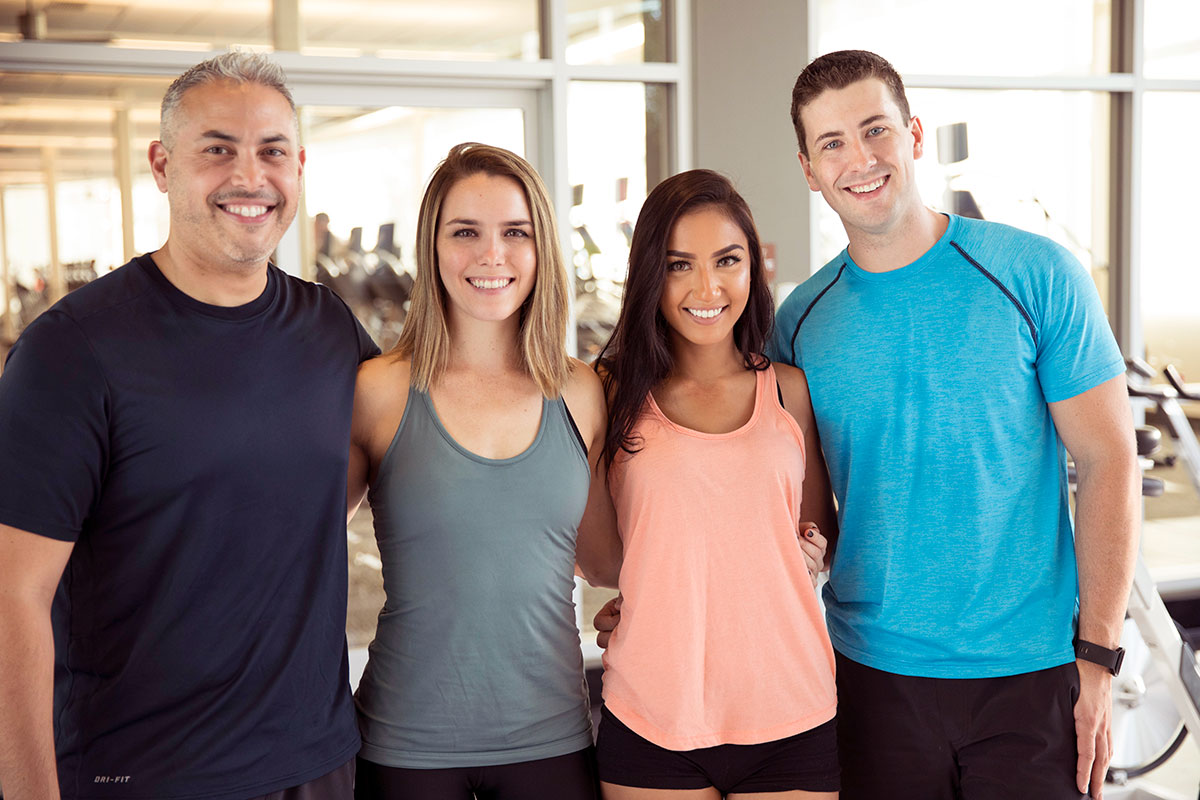
Habit vs. Lifestyle
Developing healthy habits can lead to a healthy lifestyle, but how long does it take exactly to start a new healthy habit? This number has been debated a lot, with some thinking it takes 21 days to develop a habit while others believe it can take up to 90 days. How true are these numbers and what does that mean when setting a goal to sticking to consistent, healthy habits? An article published in the National Center for Biotechnology Information (NCBI) references an article1 focused on the psychology of ‘habit-formation’ and general practice. Below is an excerpt taken from the study:
Unrealistic expectations of the duration of the habit formation process can lead the patient to give up during the learning phase. Some patients may have heard that habits take 21 days to form. This myth appears to have originated from anecdotal evidence of patients who had received plastic surgery treatment and typically adjusted psychologically to their new appearance within 21 days.22 More relevant research found that automaticity plateaued on average around 66 days after the first daily performance,9 although there was considerable variation across participants and behaviours. Therefore, it may be helpful to tell patients to expect habit formation (based on daily repetition) to take around 10 weeks. Our experience is that people are reassured to learn that doing the behaviour gets progressively easier; so they only have to maintain their motivation until the habit forms. Working effortfully on a new behaviour for 2–3 months may be an attractive offer if it has a chance of making the behaviour become ‘second nature’.
Uh oh… I Slipped Again
Don’t let a day (or two or three) skipping the gym deter you from getting right back on track! Did you eat unhealthy over the weekend? Perhaps you maybe indulged a little too much on last night’s dinner. Well, this means all your hard work and progress is gone, right? Wrong! A little misstep is no reason to feel like you’ve failed at working toward your goal. Don’t wait until next week, next month, or next year to get back on track – do it today because the time spent waiting to fix what you want to change can be time spent actively working towards your life’s goals.
You’ve got this. We believe in you. #MarchtoLAFitness

Sources:
Referenced:
ACSM recommends to cancer patients to aim for 150 minutes per week of moderate aerobic exercise with an additional two to three sessions of strength training.
Interested in a little friendly competition? Then it’s time to sign up for LA Fitness Group Leagues. Invite a friend to compete in basketball, racquetball, or volleyball today!
Achieve 6-pack abs this summer by following these 30 simple-to-follow ideas that will have you ready for the beach in no time!
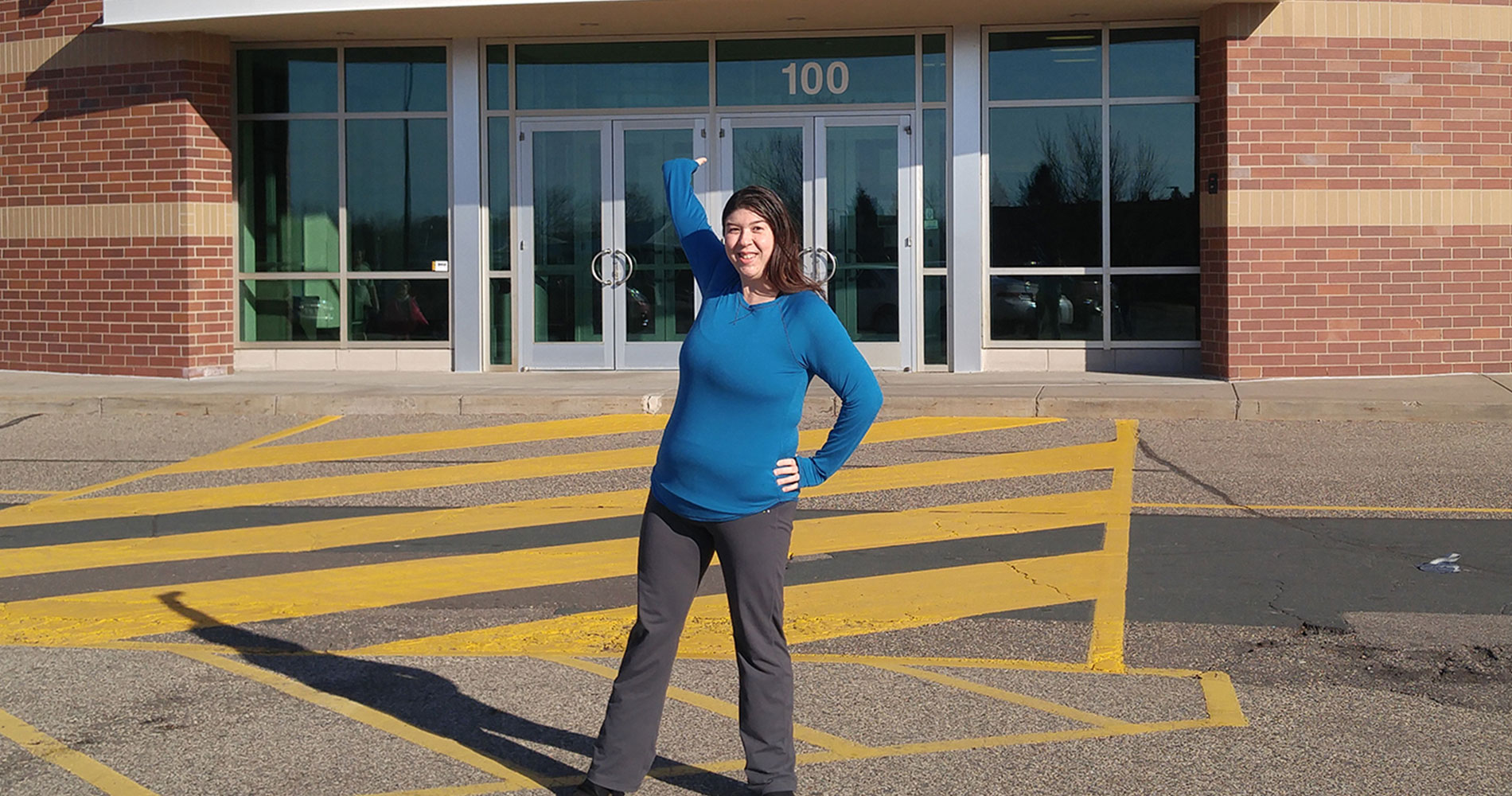
What would inspire you to make a change? To wake up, get dressed, and walk through the doors of an LA Fitness, determined to change your life – what would it take? For Kyleen S. of Wyoming, MN, it was a series of ill-fated events that led her up to that very moment. This is her story.
In 2015, Kyleen’s mother passed away. A year later, Kyleen and her then boyfriend decided to call it quits. Between the stresses of life and a busy schedule, fitness was not a priority for Kyleen’s. She had a gym membership, but never used it. She was tired of being overweight and unhappy. She wanted her life back. Kyleen’s best friend, Crystal S., and her husband, Matt S., had both been longtime members of LA Fitness, which helped Kyleen make the switch from her previous gym. She was hoping that joining a gym her friends belonged to would help her stay committed.
Once she had her mind set on making a healthy lifestyle change, Kyleen took a tour of her local LA Fitness and signed up for a yearlong membership that same day. The club’s Fitness Director, Ramon N., spoke with Kyleen about how LA Fitness’ training programs differ from what other gyms may offer. Ramon shared with Kyleen that occasionally he would go through the personal training progress books to see if any improvements had been made with clients, and if not, he would work with his staff of trainers to see how he could help. Ramon even took it a step further and shared that if trainees stopped showing up, he would call or text them to see what was up. He wanted to help hold them accountable so that they could reach their fitness goals.
Kyleen shared that she needed that, and appreciated it 100%. Ramon then walked her around the club, and started her complimentary fitness assessment. Kyleen knew that she was out of shape, but until her fitness assessment took place, she had no idea just how poor her health had become! She recalled being on the stair machine for barely 30 seconds and thinking she was going to pass out. Her stamina was incredibly low and she was struggling to perform the simplest of tasks. There was a part of her that wanted to turn around, walk straight out the door, and never look back. However, she knew this was something she had to do. She had to gain control of her health again.
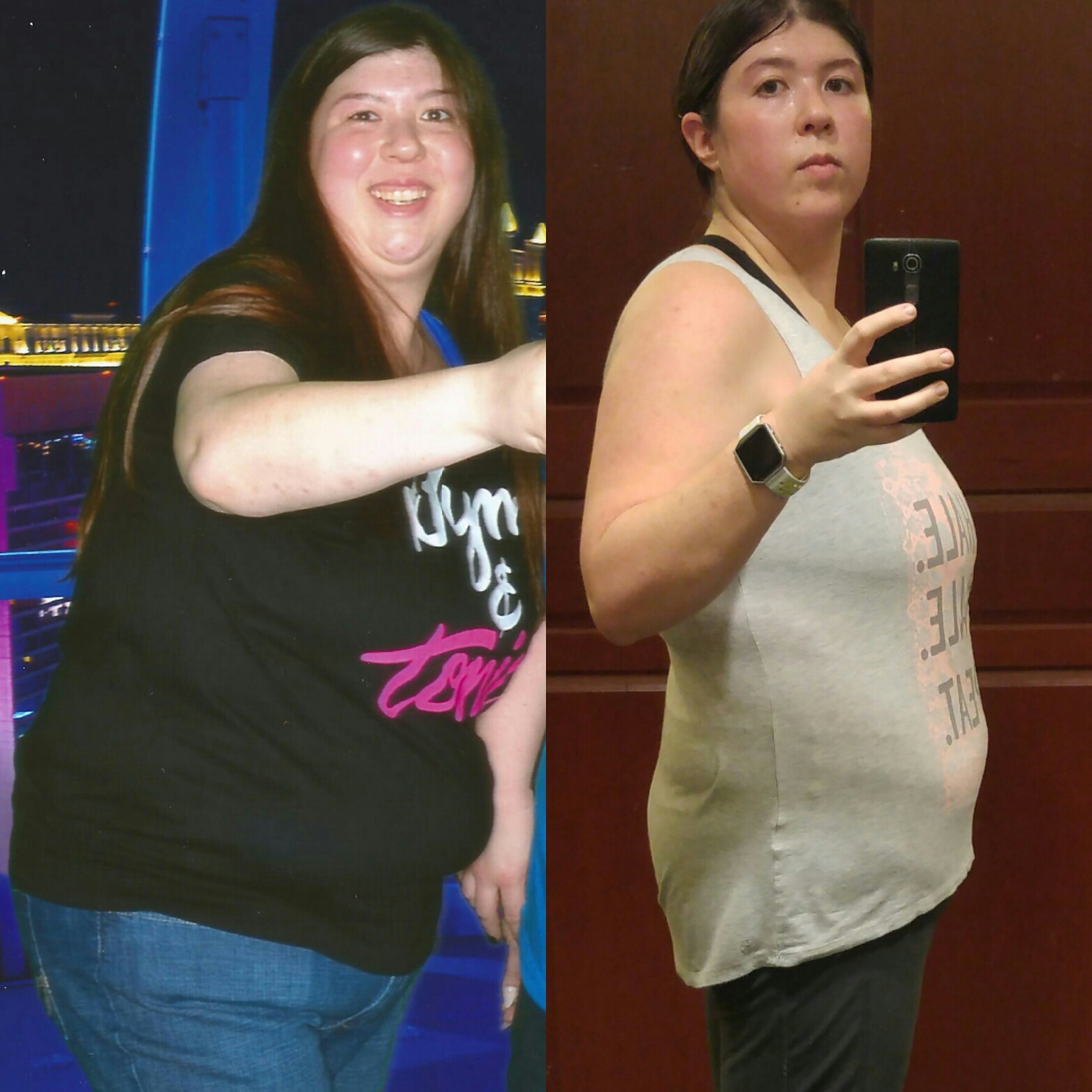
Right: March 2017 Left: November 2017
After the fitness assessment ended, Kyleen decided that it was in her best interest to sign up for personal training. She needed the support of a trainer to help hold her accountable for maintaining her fitness goals. She began with two training sessions a week. Kyleen shared the following about her how her experience went when signing up for personal training:
[Ramon] did not pressure me or make me uncomfortable in any way. I really am grateful to [Ramon] for taking the time to care about me because I truly believe that if I had said no to his and the trainers help, and died a week later from something health-related, that I could see [Ramon] thinking to himself, I wanted to help her. He genuinely cares. I still talk to him on a regular basis about my workout routine and about life in general. He truly does care about this program and everyone he signs up.
Kyleen has only ever missed two of her training sessions. The first due to her appendix rupturing and the second when she was severely sick. Otherwise, she makes it a point to stick to her schedule. Of course, there are days when she doesn’t want to go, but she makes herself go anyway. She doesn’t want to slide backwards. Another reason Kyleen continues to pushes herself is because her mother had a lot of medical problems, and she does not want to endure what she witnessed her mother go through.
When Kyleen first started her fitness journey, she had no intention of changing her diet. However, the more she started to workout, the more she began to find herself eating more fish, salads, and fruit than before. She shared that she now goes out of her way to grocery shop in order to cook herself healthier meals. She’s also increased her water intake. Between having a trainer, staying consistent at the gym, maintaining a healthy diet, and tracking her progress, Kyleen has continued to lose weight – even after transitioning to a desk job within the past year.
It’s common knowledge that sitting too much can be detrimental to the body’s physical health and knowing this, Kyleen keeps 3 and 5 lb. dumbbells at her desk to use as both paperweights and for a quick wrist-strengthening workout. Under her desk sits a yoga mat, ready to go as soon as Kyleen is. She tries to go to the gym anywhere from 3 to 5 days a week. On the days she doesn’t go to the gym, she now misses it! Since joining LA Fitness, Kyleen said she turned a complete 180 from where she was a year ago when it comes to her fitness, health and diet.
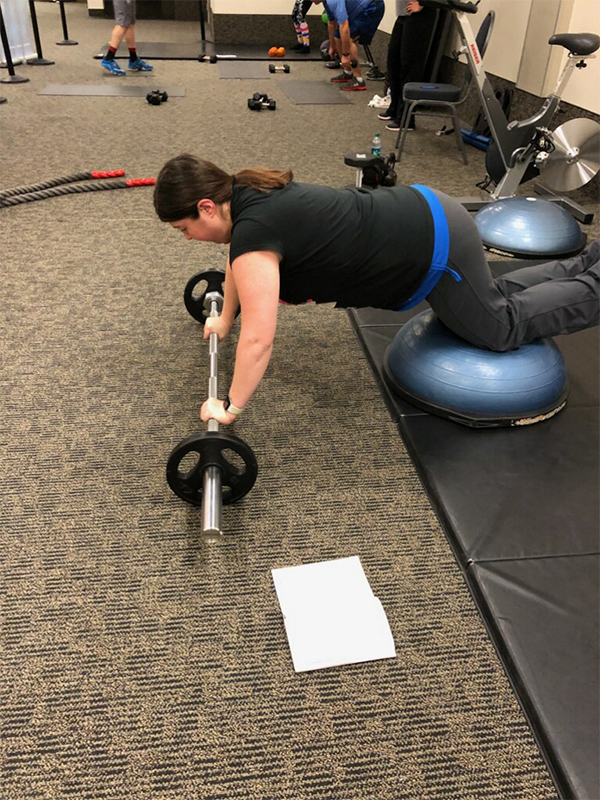


The past year Kyleen has made it all about her. By focusing on her health and happiness she has seen what a difference focus and determination can make both physically and mentally on the body. When asked how the gym has influenced her life, Kyleen shared the following:
I feel that I am surrounded by more people now that want to see me succeed in life than I have been before [….] This gym and its trainers have really helped me to change my life, and I am so grateful for that. I live and breathe LA Fitness, and I try to get my friends and family to come in and see what it’s all about!
Kyleen’s passion for fitness has made her want to help, and inspire, others who may be where she once was. It’s never the wrong time to start working on becoming healthier. In the hustle and bustle of everyday life, it’s easy to put off fitness due to being tired after a long work day, wanting to relax, or grabbing something quick to eat (just this once, which easily creates a snowball effect). If any of those reasons sound like you, you’re not alone, which is why the Living Healthy team asked Kyleen to answer the following question:
Q: If you could give others one piece of advice, what would it be?
KS: You have to want it to achieve it. You always hear people say that you have to want it and most people think, Yeah, I want to be healthier. Yeah I want to be thinner. But, you have to actually want it. Not because you think society is telling you so. Not because your friends or family are telling you so, but because you actually are ready, and willing, and truly wanting it. If you go in and say I want it, but in the back of your head you know you’re just going to go to the gym, swipe your card, maybe do a lap and go home, then you are not ready. You have to be in that state of mind where you have finally accepted that you need to make a change and you actually want that change to happen. You have to be willing to put in the work and fight.
Would you rather go out to eat than make a piece of salmon with a fresh salad and a side of quinoa? Probably, but not only are you saving yourself money by making your own food, you are choosing a healthier option and controlling what is going into your body. It is all worth it. Do not go at it alone. If you do not sign up with a trainer and you cannot get a work out buddy, at least get a friend or family member that will help hold you accountable for your actions, or lack thereof. Find someone who will ask you, did you go to the gym? For how long? What did you do? How many reps? How many sets? What part of the body did you work on? Maybe next time you should bump up your weight? Maybe next time you should try the sled? Someone who can cheer you on and be your coach, that is what my trainer is for me. He is my coach and my cheerleader.
Keep a log of what you work on. Take a notebook with you to the gym and write down everything that you do while you are there, and then the next time you go, you can see what you did. Change it up. See what weight you were lifting last time and see if you can increase it. If you are afraid or nervous of something in the gym, ask a trainer. They are more than happy to answer your questions and show you how to use a piece of equipment. You need to trust your gym and those who are there to help. Once your body starts to get used to working out on a regular basis, what was once hard will become easy. That is also why you cannot just give up after a while, and why you need to push yourself to excel even further. You might just see a change not only in your physicality, but mentally as well.
Q: How has your trainer inspired you?
KS: I train with Markus M. who is a Master Trainer at both Blaine and Roseville. He pushes me so that I do not become complacent in my workouts, and he instructs me to set small goals that we can work toward – at the moment, that is to tone my arms so I look amazing in my bridesmaid dress for July.
He helps to build up my stamina weekly when I meet up with him. I had a bad knee from when I used to play volleyball in junior high school, and at times it would just give out. He has helped me to strengthen it to the point that I can do a 135-pound weighted squat without it even phasing my knee. He makes me want to be the best that I can be when it comes to my workouts. If he gives me something that is really difficult for me, then I include it into a pre-workout that I have created for myself so that I can improve on that move. That way, when I work out with him again and we do that same exercise, I can show him how much I have improved.
If I have any questions I can just go to him and he helps to answer them, if he doesn’t know then he will refer me to someone else to help direct me to what I need to know. I cannot even fathom having a different trainer at this point. Markus knows my body and me as a person, and I can put my all my trust and respect with him.

Kyleen S. and her trainer Markus M.

Where She Is Now
Kyleen’s current fitness goals are to build muscle, tone her body and weigh in at 160 lbs. Her end goal is not to necessarily be skinny, but to be healthy and fit.
Start your journey with LA Fitness today.
ProResults® personal training services are subject to an additional agreement and payment of an additional fee. This article should not replace any exercise program or restrictions, any dietary supplements or restrictions, or any other medical recommendations from your primary care physician. Before starting any exercise program or diet, make sure it is approved by your doctor. Member testimonials have been edited for clarity and length.
For the past three decades, Jerry and Marilyn Hoagland have been playing racquetball together. This LA Fitness couple shares what's helped keep them young.
Life doesn’t always go according to plan, and sometimes that’s for the better. LA Fitness member, stuntwoman, and new mom Danielle G. shares her story of fitness triumph.
Find the exercise routine that’s right for you! Shayla W. struggled with finding a program that helped deliver the results she was looking for until she found Pilates by LAF®. This is her success story.
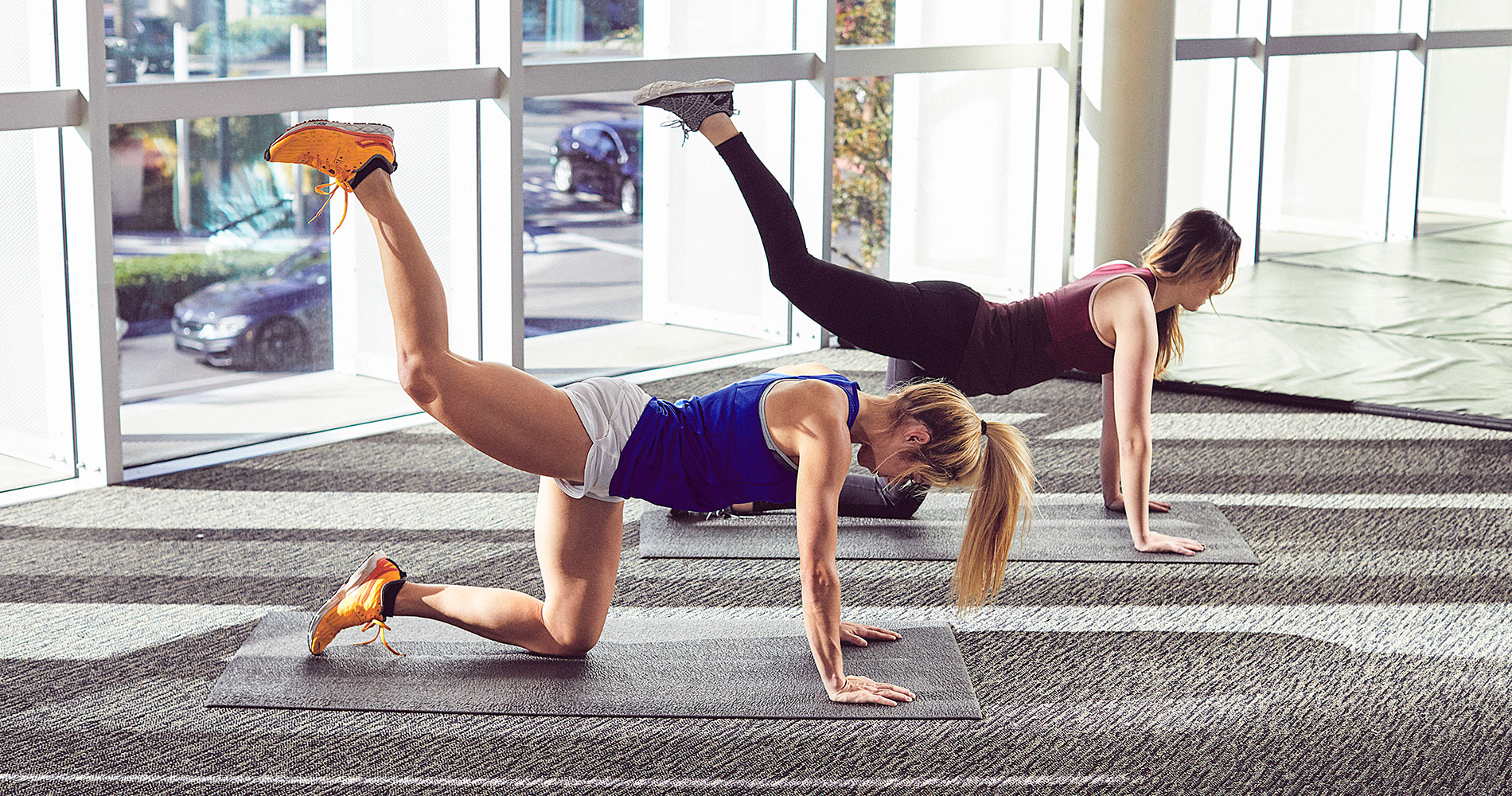
Runners, what do you do to work out your legs besides run? Pro Results® trainer, Kayla V. offers some helpful advice on leg exercises that won’t put a strain on runner’s legs.
**Selected submissions will be featured on the LA Fitness blog and possibly other LA Fitness digital media entities & websites. By making a submission, you hereby grant LA Fitness a non-exclusive, perpetual, worldwide, irrevocable license to use and make copies of the contents of such submission for any purpose and in any medium whatsoever, and you hereby waive and relinquish any copyright or other intellectual property right you may have in the contents of such submission and your right to pursue any claim for LA Fitness’s violation of those intellectual property rights.
On this episode of ‘Ask A Trainer’ we speak with LA Fitness Pro Results® trainer Morgan C., and get her expert advice on how to properly maintain muscle mass.
On this episode of ‘Ask A Trainer’ we speak with LA Fitness Pro Results® trainer Morgan C., and get her expert advice on which machines offer a full body workout.
On this episode of ‘Ask A Trainer’ we speak with LA Fitness Pro Results® trainer Morgan C., and get her expert advice on whether or not strength training or cardio should come first when it comes to weight loss.

Disease can be a hard topic to approach, but it’s definitely something worth talking about. You may find yourself asking the following questions:
We reached out to some experts on certain diseases to help better understand how these diseases impact the body’s ability to exercise and how to become stronger despite each disease.

What is ALS?
Amyotrophic lateral sclerosis, or ALS, is a disease of the nerve cells in the brain and spinal cord that control voluntary muscle movement. Most people with ALS live 2-5 years after their first signs of disease.
How does ALS affect the body?
The motor neurons die and block the communication between the brain and the muscles. As a result, the muscles shut down and atrophy. People with ALS lose the ability to talk, eat, swallow, walk, and ultimately breathe.
How does exercise benefit those battling this disease?
Studies have found that exercise can help ALS patients retain muscle strength and improve joint function. The goals are to maximize muscle function, slow down the deterioration of range of movement, and increase aerobic capacity and endurance for as long as possible. Stretching—both static and dynamic—once or twice a day can help ease muscle pain and slow the decrease in range of movement. (Source: https://alsnewstoday.com/2017/04/27/seven-tips-for-starting-exercise-with-als/)
A Special Message from Augie’s Quest
Every dollar raised through Augie’s Quest to Cure ALS is dedicated to driving the innovative science happening at the ALS Therapy Development Institute (ALS TDI). While we are laser focused on curing ALS, we hope our research leads to medical advancements for all neurodegenerative diseases.
All responses and photos above provided by a representative from Augie’s Quest.

Augie Nieto, Founder of Augie’s Quest

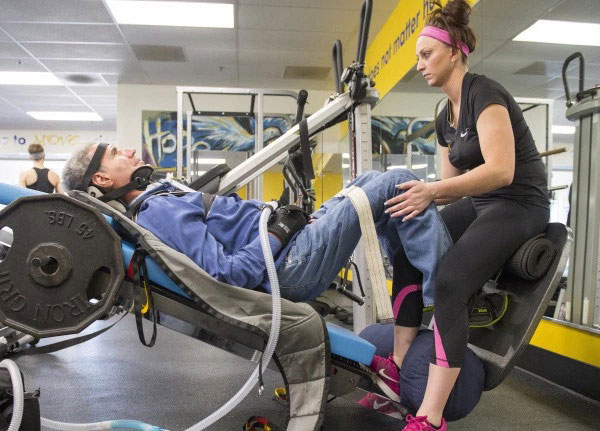

2016 Denver ALZ Walk
What is Alzheimer’s?
Alzheimer’s is a progressive and fatal disease that attacks the brain and causes problems with memory, thinking and behavior. Symptoms usually develop slowly and get worse over time, becoming severe enough to interfere with daily tasks and an individual’s independence. Alzheimer’s is the most common form of dementia and accounts for 60 to 80 percent of dementia cases.
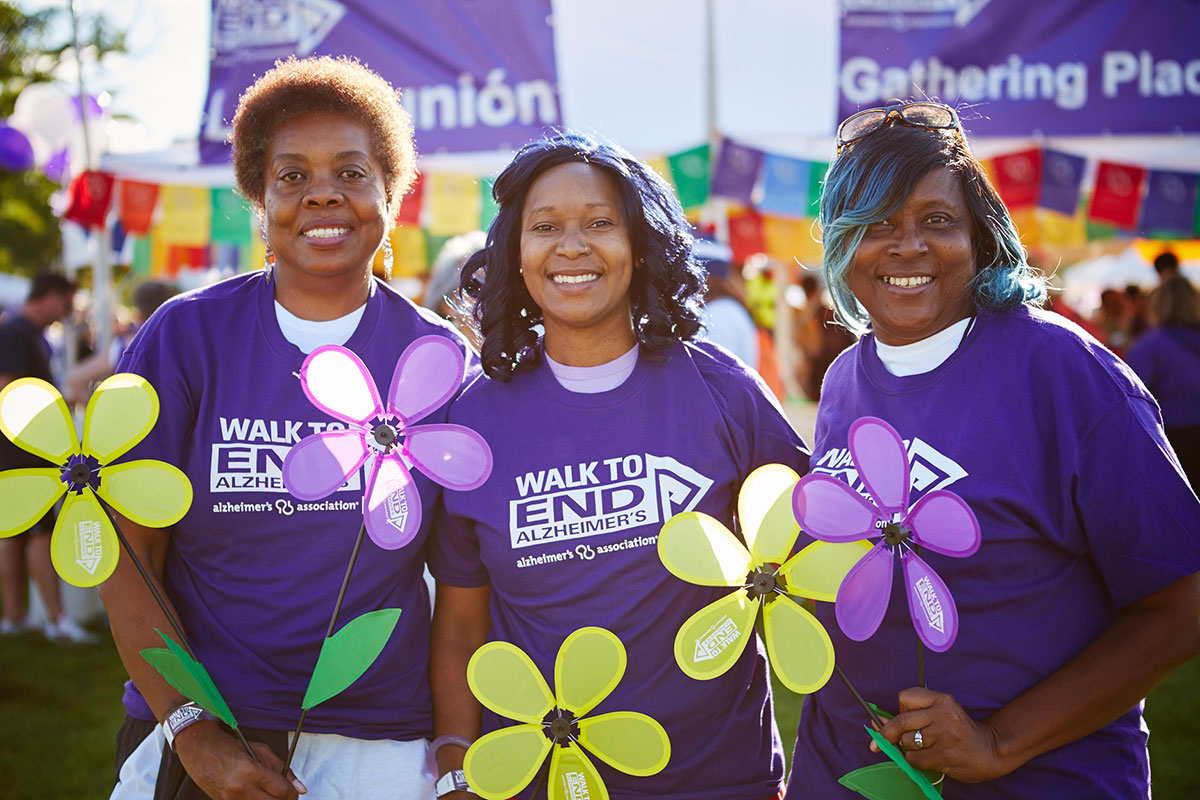
2016 Denver ALZ Walk
How does Alzheimer’s affect the body?
Alzheimer’s kills nerve cells and tissue in the brain, affecting an individual’s ability to remember, think, plan and ultimately function. As the disease advances, the brain shrinks dramatically due to cell death. Individuals lose their ability to communicate, recognize family and friends, and care for themselves. Ultimately, individuals forget how to swallow or breath; Alzheimer’s is fatal.
Early diagnosis of Alzheimer’s is extremely important as it allows better access to quality medical care and support services, and provides the opportunity for people with Alzheimer’s disease to participate in decisions about their care, including providing informed consent for current and future plans. Although Alzheimer’s has no current cure, treatments for symptoms, combined with the right services and support, can make life better for the 5 million Americans currently living with Alzheimer’s. You can learn about the 10 Warning Signs of Alzheimer’s at www.alz.org/10signs. If you suspect that you or someone you know may be experiencing these symptoms, consult with a doctor.

2016 Denver ALZ Walk
How does exercise benefit those battling this disease?
Growing evidence suggests that many factors that increase the risk of heart disease also may increase the risk of dementia. These factors include smoking, obesity, diabetes, high cholesterol and high blood pressure. The Alzheimer’s Association recommends exercise as one of the ways to help keep your brain and body healthy and prevent cognitive decline in the future. Engaging in regular cardiovascular exercise elevates your heart rate and increases blood flow to the brain and body. While there is currently no way to prevent Alzheimer’s, several studies have found an association between physical activity and reduced risk of cognitive decline. Other recommendations to keep your brain healthy as you age include eating a healthy and balanced diet, getting enough sleep, staying socially engaged, and challenging your brain with games and activities.

2016 Chicago ALZ Walk
A Special Message from the Alzheimer’s Association
Today, although Alzheimer’s cannot be prevented, cured or even slowed, we are making significant progress. The Alzheimer’s Association is confident that better treatments, earlier detection, and prevention strategies will be available in the foreseeable future. In the meantime, we know that there are steps that you can take to improve your overall health and lower your risk of cognitive decline in the future. Visit www.alz.org/10Ways to learn about things you can do now to potentially protect your brain in the future.
For those facing Alzheimer’s today, it’s important that they know that they are not alone. The Alzheimer’s Association has resources available to help support families and individuals facing this disease, including in-person care consultations, support groups, and a 24/7 Helpline (800.272.3900). Visit www.alz.org to learn more.
All responses and photos above provided by Dr. Heather Snyder, Senior Director, Medical & Scientific Relations for the Alzheimer’s Association.
What is cancer?
Cancer is an abnormal growth in a tissue of the body caused by mutations in DNA, exposure to toxins (including alcohol and smoking and radiation), certain infections (like hepatitis B or C, HPV human papilloma virus or helicobacter pylorus in the stomach), sun exposure, and genetic factors. The abnormal tissue continues to grow and invade the organ where it started (like breast or lung or colon) and also can spread by blood or lymph channels to other organs.
How does cancer affect the body?
Cancer affects the body by reducing the function of the organ in which it started (like shortness of breath with lung cancer), and by causing symptoms like bleeding, pain, fatigue, a growing lump or mass, or a sore that does not heal.
How does exercise benefit those battling this disease?
Exercise has remarkable effects on preventing and treating cancer. Importantly, exercise can reduce your chances of having many types of cancer, including breast, uterus, colon, rectal, esophageal, liver, stomach, kidney, head and neck, lung, bladder, and prostate cancers and also leukemia and myeloma. If a person has been diagnosed with cancer, exercise has been shown to increase survival and cure rates in patients with breast, colon rectal and prostate cancer. But even if a person has a different type of cancer, exercise is helpful to improve weight, reduce fatigue, control pain, lessen anxiety, reduce inflammation, and improve emotional stability. If a patient has lost strength due to the cancer or treatment with surgery, radiation, hormonal therapy or chemotherapy, exercise is important in rehabilitation to regain a normal lifestyle.
A Special Message from Cary Presant, MD (Physician, City of Hope Medical Group)
Remain active, get all types of exercise (aerobic walking or running or cycling, and anaerobic sprinting or weight training), and commit to a healthy diet and avoidance of bad health habits. Being sedentary is a health risk and getting exercise can save your life.
All responses above provided by Cary Presant, MD, Physician, City of Hope Medical Group.
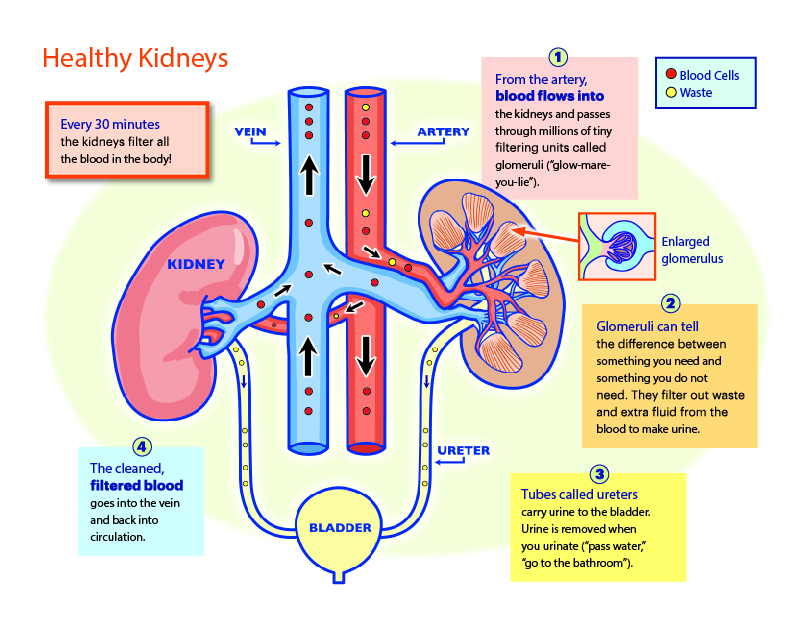
What is Chronic Kidney Disease?
Chronic kidney disease (CKD) means your kidneys are damaged and losing their ability to keep you healthy. In the early stages, most people do not have symptoms. The disease affects 30 million people in the U.S. (15% of the adult population) and approximately 90% of those with kidney disease don’t even know they have it. (For people at the earliest stages of kidney disease, 96% don’t know.) 1 in 3 Americans is at risk for CKD. Because of increasing rates of diabetes and high blood pressure, chronic kidney disease is on the rise and is an urgent issue.
How does CKD affect the body?
As kidney disease progresses, waste can build up in your blood and make you feel sick. You may develop other problems like high blood pressure, anemia, weak bones, poor nutritional health, and nerve damage. Kidney disease also increases your risk of having heart and blood vessel disease. These problems may happen slowly and can lead to kidney failure. Once kidneys fail, dialysis or a kidney transplant is needed to stay alive.
How does exercise and proper nutrition benefit those battling this disease/susceptible to this disease?
A few of the manageable, and sometimes preventable, risk factors of CKD include diabetes and high blood pressure. To prevent these health issues, or at the very least manage them so they don’t progress into something worse, it is best to maintain a healthy diet and exercise routine. Proper nutrition, incorporated with a healthy lifestyle, can help give your body a better chance at functioning properly, therefore diminishing your risk for developing CKD.
A Special Message from the National Kidney Foundation
Have you ever thought about donating an organ? Organ and tissue donation helps others by giving them a second chance at life. Learn more about the donation process–and how to become an organ donor. Visit https://www.kidney.org/transplantation for more information on how you could help save a life. Listen to some awe-inspiring testimonials from living donors here.
All responses above sourced from The National Kidney Foundation, with permission from Nichell Taylor Bryant, Senior Media Relations Manager. Kidney graphic provided by the Nation Kidney Foundation, Marketing & Communications.
What is COPD?
COPD stands for Chronic Obstructive Pulmonary Disease. Chronic means that the disease itself does not go away. It is always there, but, it is treatable and can be managed effectively. Obstructive means that you have trouble getting your air out of your lungs. Pulmonary means it affects the lungs.
COPD is an umbrella term used to describe progressive lung diseases including emphysema, chronic bronchitis and refractory (non-reversible) asthma. This disease is characterized by increasing breathlessness.
How does COPD affect the body?
As we mentioned, obstructive means you have trouble getting air out of your lungs. Why is this? With COPD the lungs have been damaged. This tends to make them stretched out and over-inflated, and lose
some of their elastic quality. We all know that a new balloon quickly goes back to its small size when you let the air out of it. But a balloon that’s been blown up many times is not as elastic as it once was, and it’s not as good at getting the air out. Lungs with COPD can be that way too, and if you can’t blow out the air you should, it’s harder to take your next breath.
So, when you are short of breath, of course, you’re going to want to sit down more and not be as active as you once were. Moving around less can make your muscles weak and your joints stiff. If it hurts to move around, you’re going to be even less active. The more sedentary you are, the less you can do, and the more frustration and anxiety you might have. Your breathing becomes more shallow (you are working very hard to huff and puff without moving much air) and this can be exhausting — and depressing.
Also, the heart and lungs work closely together to make sure enough oxygen gets around to all parts of our bodies. When the lungs are working too hard, more stress is put on the heart. So, COPD can affect not only the lungs but other body systems, your muscles, your brain… other parts of your body can begin to struggle to keep up with what they need to do.
How does exercise benefit those battling this disease?
You might think that if a person is this short of breath, there is no way they can exercise. But they can exercise, and it helps them have more endurance, strength and flexibility. For many people with COPD, exercising is a very scary thing. Pulmonary Rehabilitation is a good way to start. Pulmonary Rehabilitation professionals are very good at helping people with severe shortness of breath improve their level of fitness. They can help people with mild, moderate or severe COPD be able to feel better, breathe easier and be more active. And when you can do more, you may feel less depressed and anxious. You are more likely to have a fuller, more enjoyable life. Exercising and learning how to take the best possible care of your lungs can make an enormous difference in the life of a person with COPD!

Jane Martin, Assistant Director of Education for the COPD Foundation.
A Special Message from the COPD Foundation
You are not alone! There are 30 million Americans who have COPD and help is available! You can become informed and empowered, so you can have the confidence to control your breathing and cope with the changes that often come with having COPD. Visit COPD 360social, our vibrant online community to learn from others with COPD. https://www.copdfoundation.org/COPD360social/Community/Activity-Feed.aspx
For more about COPD, go to: http://www.copdfoundation.org
All responses above provided by Jane Martin, Assistant Director of Education for the COPD Foundation.
What is depression?
Depression is a serious medical illness that affects the brain and the body. People often think depression is just being sad all the time. In fact, people with depression do not necessarily feel sad – they feel numb and hopeless. Symptoms include inability to concentrate, loss of pleasure in things that used to be fun, difficulty sleeping or sleeping too much, loss of appetite, feelings of intense rejection or guilt, and suicidal thoughts.
How does depression affect the body?
Depression is a full-body illness. We know that several neurotransmitter systems in our brains are impacted by depression. These neurotransmitters influence different circuits and feedback loops that control every aspect of our lives, from appetite to motivation, to mood and feeling excited or peaceful. Our gut is affected. Our hearts and our muscles. Aches and pains are magnified.
How does exercise benefit those battling this disease?
Just 15 minutes of exercise changes the electrical activity in your brain’s mood centers. Regular exercise makes your brain stronger and more resilient to stress by increasing nerve growth factors.
A Special Message from The Hope For Depression Research Foundation
Remarkable advances in neuroscience teach us not just about mental illness but about mental wellness. Positive life changes can lead to positive brain changes that enhance our emotional well-being. Regular exercise, good sleep habits, and practicing gratitude are just three simple ways to keep our brains healthy and resilient. Gratitude is scientifically proven to reduce anxiety, improve sleep, and increase the brain’s production of serotonin – an important neurotransmitter. Regardless of your life’s circumstances, the gratitude circuit in your brain can be strengthened. Make gratitude a daily part of your routine by taking a few minutes each day to write down three things you are grateful for.
All responses above provided by Louisa Benton, Executive Director for the Hope for Depression Research Foundation.
What is diabetes & how does it affect the body?
As defined by the CDC,
Diabetes is a condition in which the body does not properly process food for use as energy. Most of the food we eat is turned into glucose, or sugar, for our bodies to use for energy. The pancreas, an organ that lies near the stomach, makes a hormone called insulin to help glucose get into the cells of our bodies. When you have diabetes, your body either doesn’t make enough insulin or can’t use its own insulin as well as it should. This causes sugars to build up in your blood. (Source: https://www.cdc.gov/media/presskits/aahd/diabetes.pdf)
How does exercise benefit those battling this disease/susceptible to this disease?
Regular physical activity is important for everyone, but it is especially important for people with diabetes and those at risk for diabetes. When you are active, your cells become more sensitive to insulin so it can work more efficiently. Your cells also remove glucose from the blood using a mechanism totally separate from insulin during exercise. So, exercising consistently can lower blood glucose and improve your A1C*. When you lower your A1C, you may be able to take fewer diabetes pills or less insulin.
Studies indicate that moving more throughout the day—in addition to getting the recommended 30 minutes a day, 5 days a week of moderate activity—may prevent or delay type 2 diabetes. It also is shown to improve blood glucose control, reduce cardiovascular risk factors, contribute to weight loss and improve wellbeing in people with type 2 diabetes. Regular exercise also has considerable health benefits for people with type 1 diabetes, including improved cardiovascular fitness, muscle strength and insulin sensitivity.
The American Diabetes Association recommends breaking up sitting time with three or more minutes of light physical activity—such as walking, leg extensions or overhead arm stretches—every 30 minutes. This is a new recommendation as of October, 2016. Previously, we recommended movement every 90 minutes.
Read more about how food and fitness affect health, by clicking the following link: http://www.diabetes.org/food-and-fitness/fitness/
*A1C, as defined by Merriam-Webster, is a stable glycoprotein formed when glucose binds to hemoglobin A in the blood.
A Special Message from the American Diabetes Association
The good news is diabetes can be managed with the proper care of a health professional, diet and exercise. For more information on diabetes, check out the ADA’s Diabetes Forecast magazine, full of information to help better understand how to manage this disease.
Below are some suggestions for incorporating more movement during the workday.
All responses above sourced from The American Diabetes Association, with permission from Courtney Cochran, Senior Manager of Media Relations.

What is heart disease?
Heart disease is the leading cause of death globally. It claims more lives each year than all forms of cancer and Chronic Lower Respiratory Disease combined.
Heart disease is a common term for the buildup of plaque in the heart’s arteries that could lead to heart attack.
Your heart muscle needs oxygen to survive. A heart attack occurs when the blood flow that brings oxygen to the heart muscle is severely reduced or cut off completely. This happens because coronary arteries that supply the heart muscle with blood flow can slowly become narrow from a buildup of fat, cholesterol and other substances that together are called plaque. When a plaque in a heart artery breaks, a blood clot forms around the plaque. This blood clot can block the blood flow through the heart muscle. When damage or death of part of the heart muscle occurs, it is called heart attack. About every 40 seconds, someone in the United States has a heart attack.
How does heart disease affect the body?
After a first heart attack, most people go on to live a long, productive life. However, around 20 percent of patients age 45 and older will have another heart attack within five years of their first.

How does exercise benefit those battling this disease/susceptible to this disease?
Exercise is essential to living heart-healthy. “Our bodies were designed to be physically active, and they don’t do well with long-term exposure to sedentary living. Lack of physical activity is a major risk factor for cardiovascular disease,” says Russell Pate, Ph.D., professor in the Department of Exercise at the University of South Carolina.
According to the American Heart Association’s exercise standards, “Exercise can be viewed as a preventative medical treatment, ‘like a pill’ that should be taken on an almost daily basis.”
The heart-healthy benefits of exercising for just 30 minutes a day are nearly endless. To name a few, exercise:
After a heart attack, be sure to talk to your doctor first before starting an exercise routine. Considering your medical history, age and other factors, your doctor can help determine what activities are best for your current physical condition.
We suggest starting a walking program, which is the easiest way to begin exercising and has the lowest dropout rate of any type of exercise. In addition, studies show that for every hour of walking, life expectancy may increase by two hours.
A Special Message from The American Heart Association
Don’t wait to get help if you experience any of these heart attack warning signs. Although some heart attacks are sudden and intense, most start slowly, with mild pain or discomfort. Pay attention to your body — and call 911 if you feel:
Emergency Medical Services (EMS) staff are trained to revive someone whose heart has stopped. Patients with chest pain who arrive by ambulance usually receive faster treatment at the hospital. It is best to call EMS for rapid transport to the emergency room.
Most people survive their first heart attack and return to their normal lives to enjoy many more years of productive activity. But living with heart disease does mean you need to make some changes in your life that include regular physical activity. For more information, resources and support about heart disease, visit www.heart.org.
All responses above provided by a representative from The American Heart Association.

What constitutes a stroke?
Stroke is a disease that affects the arteries leading to, and within, the brain. It is the No. 5 cause of death and a leading cause of disability in the United States.
A stroke is sometimes described as a brain attack, as a stroke occurs when a blood vessel that carries oxygen and nutrients to the brain is either blocked by a clot or bursts/ruptures. When there’s a blockage, part of the brain cannot get the blood and oxygen it needs, and many brain cells die. During a stroke emergency, “time loss is brain loss.”
There are different types of strokes:
How does having a stroke affect the body?
The brain is an extremely complex organ that controls various body functions. If a stroke occurs and blood flow can’t reach the region that controls a specific body function, that part of the body won’t work as it should.
Stroke is a leading cause of long-term disability and the leading preventable cause of disability. The effects of a stroke depend primarily on the location of the obstruction and the extent of brain tissue affected.
If the stroke occurs in the brain’s right side, the left side of the body (and the left side of the face) will be affected, producing some or all the following:
If the stroke occurs in the left side of the brain, the right side of the body will be affected, producing some or all the following:

How does exercise benefit those who have suffered from a stroke?
For the first three months after a stroke, the brain is much like a child’s brain, ready to learn, ready to make new connections. This ability for our brains to adjust is known as neuroplasticity, and it plays a crucial role in recovery.
“Stroke is more than ever preventable, treatable and beatable. Through awareness, education and tools, stroke survivors can feel highly confident in taking control of their health to significantly reduce their risk of experiencing another stroke,” said Dr. Joseph Hanna, Chairman of Neurology at The MetroHealth System, Inc., in Cleveland and Spokesperson for the American Stroke Association.
Regular exercise can help stroke survivors regain skills and abilities that can help them become more independent and improve their quality of life. After a stroke, it is important to follow your doctor’s guidance before starting any fitness plan.
A Special Message from The American Stroke Association
Fortunately, 80% of strokes can be prevented! Regular exercise is a crucial component of preventing common risk factors of stroke such as obesity, high blood pressure and diabetes. Follow the American Heart Association’s Life’s Simple 7 to prevent strokes and live a longer, healthier lifestyle:
Recognizing the warning signs of a stroke and taking immediate action can make a big difference in a stroke patient’s recovery outcome. The American Stroke Association teaches the warning signs of a stroke using the acronym, F.A.S.T., to help people recognize the symptoms and know what to do.
F.A.S.T. stands for:
For more information and resources to prevent, beat and treat stroke, visit www.StrokeAssocation.org.
All responses above provided by a representative from The American Stroke Association.
This article should not replace any exercise program or restrictions, any dietary supplements or restrictions, or any other medical recommendations from your primary care physician. Before starting any exercise program or diet, make sure it is approved by your doctor.
This article contains links to websites owned and operated by third parties. If you use these links, you leave our website. These links are provided for your information and convenience only. We do not endorse any content available through these links.
ACSM recommends to cancer patients to aim for 150 minutes per week of moderate aerobic exercise with an additional two to three sessions of strength training.
Interested in a little friendly competition? Then it’s time to sign up for LA Fitness Group Leagues. Invite a friend to compete in basketball, racquetball, or volleyball today!
Achieve 6-pack abs this summer by following these 30 simple-to-follow ideas that will have you ready for the beach in no time!


Close your eyes and picture this: the lustrous crackling of bacon in a cast iron pan, the sizzle of pancakes on a hot buttered grill, the alluring aroma of freshly brewed coffee… ahhh.
There is something about a full, balanced breakfast that just starts the day off on the right foot – but is breakfast really necessary? Some of us opt out of an early morning meal in exchange for a heavier lunch or dinner; however, this could have negative effects on the body.
Studies have shown that eating breakfast can help promote1:
With so many health benefits, making sure to eat breakfast seems like a no-brainer, right? Yet, many of us are in a rush with the morning hustle and bustle to make the time to properly fuel our bodies. Skipping your morning munchies could leave your body feeling sluggish and lacking the energy it needs to keep you feeling focused throughout the day. Not only that, but skipping the first meal of the day may cause you to overeat later and that’s where the extra calories start sneaking up on you!
Here’s the catch though… having too big of a breakfast can actually do more harm than good. A study referenced on WebMD suggested that “people who had large breakfasts ate more during the day.”2 This may leave you thinking to yourself, should I eat breakfast then or skip it? Well, think of it this way. Food is fuel for our bodies. Think of the stomach as a tank for providing the ‘fuel’ our bodies need to properly function. The type of fuel you put into your tank is going to drastically affect the power you get out of it.
!! Tip: Stick with complex carbs, protein, fruit and/or vegetables, ideally paired with a calcium source.
Grabbing a donut on the way into work or opting for a quick packaged pastry with your morning coffee, may taste good in the moment. However, those empty calories are going to burn off quickly and leave your body dragging. Our registered dietitian, Debbie J., offers some healthy, well-balanced breakfast suggestions to swap in as a replacement for that morning treat.




The Results
In yet another study published in the journal Obesity, researchers recruited 93 overweight women and put them on a 12-week long prescribed diet.3 All of the women participating in the study consumed a total of 1,400 healthy calories a day. The only difference was that half the group ate their largest meal at breakfast, while the other half ate their largest meal at lunch or dinner.
The results were significantly different! The group who ate their biggest meal at breakfast lost two and a half times the amount of weight as their counter group.4 The same group noticed improvements in belly fat, hunger levels, and fasting blood sugar levels! These noticeable differences seem to trend across multiple studies conducted on the benefits of breakfast.
A Message From the AHA
The American Heart Association even issued a statement noting that “planning and timing meals and snacks, such as not skipping breakfast and allocating more calories earlier in the day, might help reduce cardiovascular disease risk.”5 People who choose to forego breakfast, about 20 to 30% of U.S. adults6, are “more likely to are more likely to be obese, have inadequate nutrition, show evidence of impaired glucose metabolism or be diagnosed with diabetes.”7
Our Thoughts
So, is breakfast really the most important meal of the day? Yes and no. More important than simply eating breakfast before starting your day is paying attention to what type of calories you’re consuming and focusing on balanced and controlled portioning. If you consume most of your calories during the morning, make sure to have a smaller meal for lunch and dinner. Having a larger meal in the morning may also help burn off more calories due to the fact that you have more time to be active before heading to bed.
Our advice? Go ahead and make time for breakfast, because a body lacking fuel is going to be less productive than a body energized with the nutrients necessary for a healthy day.
Sources:
This article should not replace any exercise program or restrictions, any dietary supplements or restrictions, or any other medical recommendations from your primary care physician. Before starting any exercise program or diet, make sure it is approved by your doctor.
ACSM recommends to cancer patients to aim for 150 minutes per week of moderate aerobic exercise with an additional two to three sessions of strength training.
Interested in a little friendly competition? Then it’s time to sign up for LA Fitness Group Leagues. Invite a friend to compete in basketball, racquetball, or volleyball today!
Achieve 6-pack abs this summer by following these 30 simple-to-follow ideas that will have you ready for the beach in no time!
Be the first to know about exclusive
content, deals and promotions